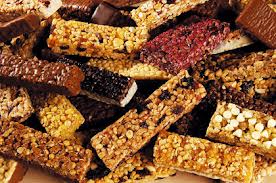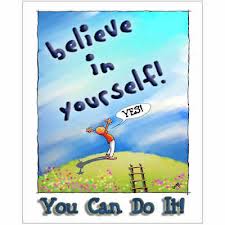1. Under & Over Hydration
Both under & over hydration will lead to hyponatremia through different processes. Research has suggested 500-750 mil/hr will deal with most athletes needs under general conditions. Remember that both to little and to much liquid will cause you to under perform. If you need to consume over 850mil/hr it is recommended that you pay particular attention to additional electrolyte in your liquid in order to prevent dilutional hyponatremia. Remember some days you may only need to consume 500-700 mil/hr and other days 600-800 mil/hr so use your training to evaluate your own personal requirements as an athlete. the values here are relevant to a 75kg male athlete.
2. Not Eating Protein During & After Exercise.
In order to prevent your body from lean muscle tissue catabolism it is important that you consume some protein on riders longer that 2 hours. In some riders it might be as low as 1:45 hours or may be as long as 2:30 hours into the riders training session where your body starts to utilize protein to fulfill its energy requirements. Protein could end up providing 10% ±5 of your energy requirements. A simple and easy way to ascertain if this is happening to you in your rider is to smell your base layer post training. If it has a high ammonia smell then your deficient in carbohydrates and using protein for fuel. There are various product on the market for dealing with this problem.
3. Wrong Food Type Consumption During Exercise
Eating to much solid food close to an event will cause bloating, nausea and lethargy. It will also divert blood away from the active muscle to the stomach to digest the food. In addition to this the digestive enzymes, fluids and time involved will reduce your performance capabilities. Research has shown that liquid food and gels have not reduced performance as much as solid foods have. It is understandable in long stage races that solid food must be eaten but this is done on a controlled basis by the professionals and years of experience have thought them to eat what suits them best. As for the one day and sportive riders the liquid product affords the best performance benefits. So eat your last solid meal 3 hours before you start and then continue on the liquids & gels till the finish.
4. Wrong Pre Race/Workout Fueling Strategy
Don’t stuff yourself the night before an event in the name of carb-loading. Excess carbs will be stored as fat and to maximize glycogen stores it takes many weeks of training and post workout refueling techniques. Your pre race meal should only top off what you burnt from your meal the previous night. You should only top off what you have been burning and allow the main meal to be digested.
5. Doing or trying something new for the first time
The most important thing that you do on race day is to be consistent with your strategies and habits pre, during and post race. Use the strategies that have worked for you in the past. This is the wrong time to be introducing some new element into your racing strategy. It could go well or more often that not it could go pear shaped. I you have a new or novel idea and think that it might benefit your performance try it out in training and see what advantage it gives you and also think about the practicalities of trying to introduce it into a race scenario of 150 riders or athletes tearing down the road.
6. Staying true to your strategy
Once you have landed at your race and are committed to your strategy, stay committed. One of the fundamental thing athletes do wrong is to doubt themselves or their strategy and then to change it half way thorough a race or even before it has begun. You might have decided to TT at a particular Heart Rate or you might have decided to watch a particular athlete who is performing well. I you have chosen a strategy, commit and stick to it. It is understandable that at times one might have to change a strategy because of external issues but in the main the athlete should have full commitment and belief in hi.her own strategy and stick with it. You can always change it after the race and improve it for the next event through you post race debrief.
7. To much pre race training and not enough recovery
Once the racing season starts athletes tend to keep training at pre race season levels and don’t allow enough recovery time during the week between events. This leads to a build up of stress in the body and eventually will bring the athlete deep into the valley of fatigue. Once this happens the athletes performance will decline, global mood disturbances will become apparent and the desire to race will diminish. It is alway good to be fresh when racing. Be sure to monitor fatigue levels and take a rest week every every month. As you age you require more time for recovery so keep this in mind.
8. Poor General Body Maintenance
Simple things like not cleaning shorts can lead to saddle sores, even if only used for a few minutes, poor hand hygiene can lead to stomach upsets, not getting a massage very often can lead to tightness and trigger points developing throughout the body and lead eventually to imbalances and injury. Not dealing with a little niggle in the knee can lead to maybe full blown tendentious . So because you are using your body at a high level and introducing a high level of stress it is important that you listen and have your checkups done regular.
9. Correct Clothing for the Event
When racing or competing in a sportif it is important that you are as comfortable for the day as possible. Always check the local weather for the day and ensure you have enough clothing needed for the conditions. It is easier to take clothing off than put it on. I you have a problem doing this I recommend you go to a quiet road and practice how to put a rain cape on and off. Do the same with gloves and overshoe. If nothing it will help you improve your bike handling skills. Service cars, team cars and even marshal will all take a rain cape off you. You can even put your race bag into the team car which might contain arm-warmers or heavier gloves should conditions be set to deterioate during an event. So be smart and be ready.
10. Don’t believe everything You Here
The world of sports is full of stories from the hero to the man you only and will only ever meet once. Most of what you hear will be fiction from guys not training and being off the bike for 10 years and winning to guys working 40 hours a week and doing 25 hours on the bike. Be fair to your self and develop what works for you, if you need answers contact a coach or someone with experience in the field your enquiring about. Look for people currently looking after top athletes as they will be the ones with the most current and up to date information. This is what we do http://www.athleteclinic.com You can contact us on our web site contact page to arrange and appointment.








Reblogged this on The Athlete Clinic.